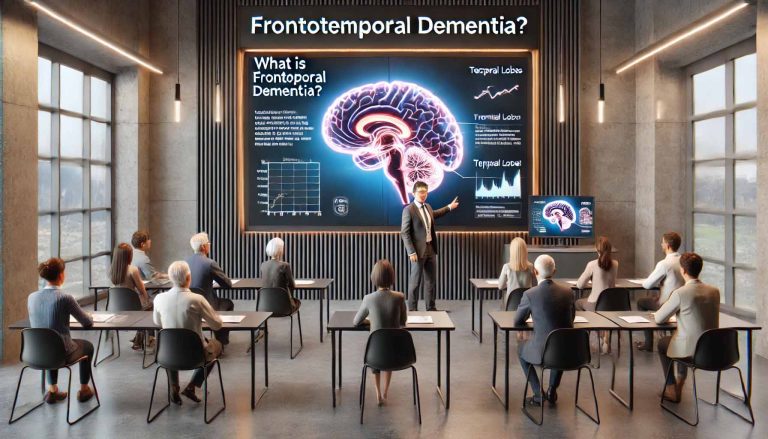An Incomplete Guide
What is Lewy Body Dementia (LBD)? The Hallucination Dementia

Lewy Body Dementia (LBD) is a progressive neurological disorder caused by the buildup of abnormal protein deposits, called Lewy bodies, in the brain. These protein accumulations disrupt brain function, leading to cognitive decline, motor impairments, hallucinations, and fluctuating alertness.
LBD is the second most common type of degenerative dementia after Alzheimer’s disease. However, it remains underdiagnosed due to its overlapping symptoms with other neurodegenerative conditions like Parkinson’s disease and Alzheimer’s.
What is Huntington’s Disease Dementia (HDD)?
What Causes Lewy Body Dementia?
Lewy Body Dementia occurs due to the accumulation of alpha-synuclein protein clumps (Lewy bodies) in brain regions responsible for thinking, movement, and autonomic functions. Researchers are still studying why these protein aggregates develop, but they appear to disrupt neurotransmitter activity, particularly dopamine and acetylcholine.
Several risk factors may contribute to LBD, including:
- Age – Most cases develop in individuals over 50.
- Genetics – While most cases are sporadic, some familial links exist.
- Parkinson’s Disease – People with Parkinson’s have a higher risk of developing LBD.
Although LBD shares some similarities with both Alzheimer’s and Parkinson’s, it has distinct symptoms that set it apart.
Symptoms of Lewy Body Dementia
LBD is unique because symptoms fluctuate, meaning cognitive function may appear normal one day and significantly impaired the next. Core symptoms include:
Cognitive Symptoms
- Severe fluctuations in attention and alertness (good days and bad days).
- Difficulty with problem-solving, planning, and reasoning.
- Memory issues (less prominent than in Alzheimer’s).
- Visual hallucinations (detailed visions of people or animals).
Motor Symptoms (Parkinsonism)
- Muscle stiffness and tremors.
- Slow movement (bradykinesia).
- Shuffling gait and frequent falls.
Sleep Disturbances
- REM sleep behavior disorder (acting out dreams).
- Insomnia or excessive daytime sleepiness.
Autonomic Dysfunction
- Blood pressure fluctuations, dizziness, and fainting.
- Constipation and urinary issues.
Hallucinations, severe fluctuations in cognition, and early motor symptoms distinguish LBD from other dementias.
Types of Lewy Body Dementia
LBD encompasses two related conditions:
- Dementia with Lewy Bodies (DLB) – Cognitive symptoms appear first, followed by movement issues.
- Parkinson’s Disease Dementia (PDD) – Motor symptoms appear first (as in Parkinson’s disease), with dementia developing later.
While both conditions involve Lewy bodies, the timing of symptom onset determines the diagnosis.
How is Lewy Body Dementia Diagnosed?
Diagnosing LBD is challenging because its symptoms overlap with multiple neurological disorders. No single test confirms the disease, but physicians use a combination of:
- Neurological Exams – Assessing movement, cognition, and reflexes.
- Neuropsychological Testing – Evaluating memory, problem-solving, and attention.
- Brain Imaging – MRI and PET scans may help rule out other conditions.
- Sleep Studies – Detecting REM sleep behavior disorder, a key LBD indicator.
Misdiagnosis is common, many LBD patients are initially diagnosed with Alzheimer’s or Parkinson’s.
Treatment and Management
There is no cure for LBD, but treatments help manage symptoms.
Medications:
- Cholinesterase Inhibitors (e.g., Donepezil, Rivastigmine) – Improve cognition and alertness.
- Levodopa – Helps with Parkinsonian motor symptoms.
- Melatonin or Clonazepam – Treats REM sleep behavior disorder.
- AVOID Antipsychotics – Many antipsychotic drugs can worsen LBD symptoms, leading to dangerous side effects.
Supportive Therapies:
- Physical Therapy – Improves mobility and reduces falls.
- Occupational Therapy – Assists with daily activities.
- Speech Therapy – Helps with swallowing and speech difficulties.
Lifestyle Modifications:
- Structured Routines – Minimize confusion and agitation.
- Safe Home Environment – Reduce fall risks with grab bars and clear walkways.
- Caregiver Support – Education and emotional support for family members.
Proper symptom management can improve quality of life for both patients and caregivers.
Prognosis and Life Expectancy
LBD is a progressive condition, meaning symptoms worsen over time. Life expectancy after diagnosis varies, with most individuals living 5 to 8 years. The disease progression is unpredictable, with some patients declining rapidly and others maintaining stable periods.
Early diagnosis and comprehensive care strategies can help manage symptoms and improve daily functioning.
Wrapping Up
Lewy Body Dementia is a complex and often misdiagnosed condition that affects cognition, movement, and behavior. Understanding its unique symptoms, especially fluctuating cognition and hallucinations, can aid in early recognition and appropriate treatment.
With proper management, individuals with LBD can maintain a better quality of life, and caregivers can receive the support they need to navigate this challenging condition.
- All Posts
- Dementia Guide
- Latest News
- The BAT Signal
- Versus
- All Posts
- Dementia Guide
- Latest News
- The BAT Signal
- Versus



